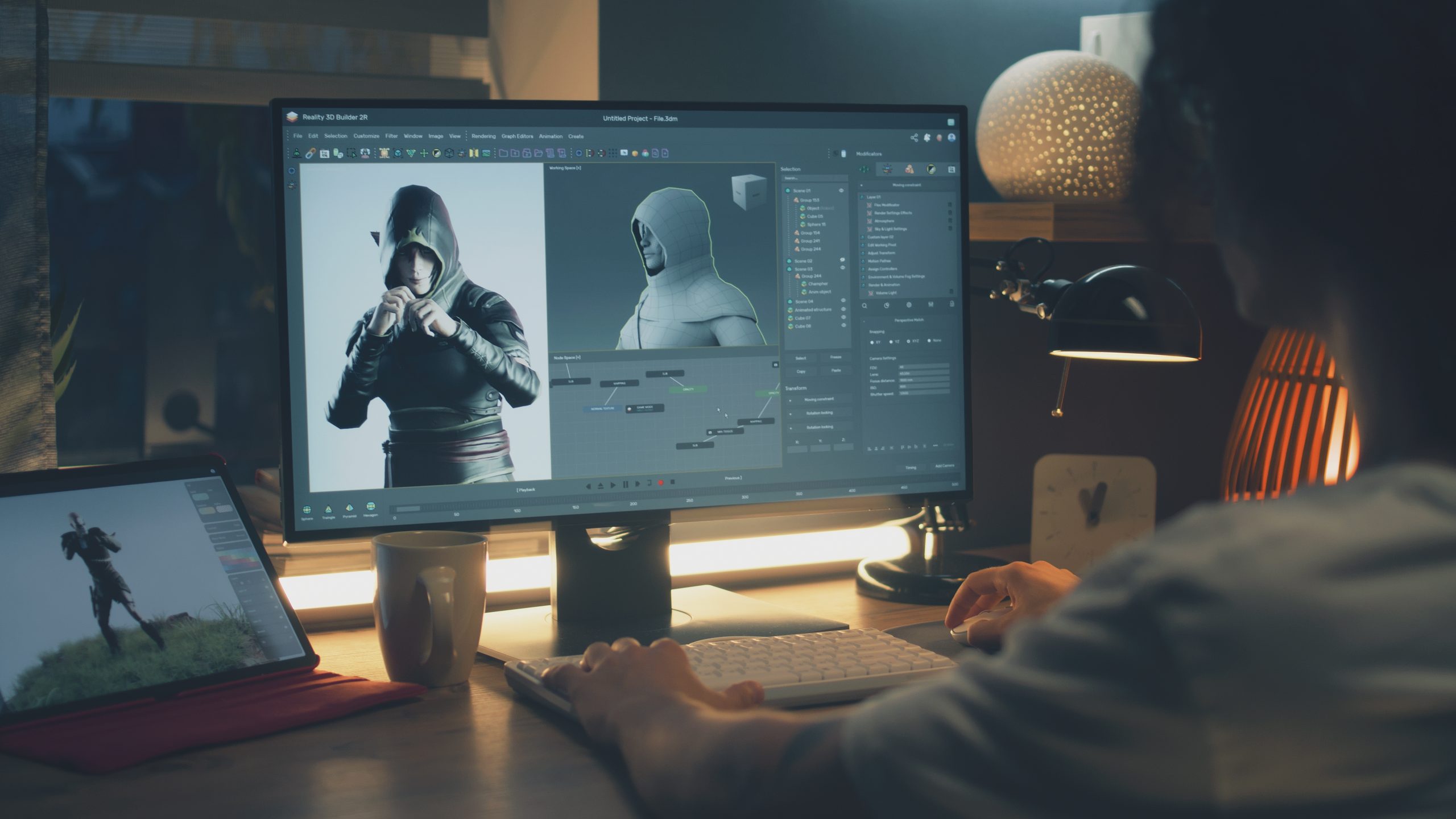Digital Marketing
The Future of 3D Animation in Video Design Services

Introduction
The world of video design has undergone a remarkable transformation in recent years, with 3D animation emerging as a driving force behind engaging and immersive visual experiences. As technology continues to advance, the future of 3D animation in video design looks incredibly promising. In this article, we will delve into the exciting developments and trends shaping the future of 3D animation in video design.
Realistic Rendering and Visualization
One of the most significant advancements in 3D animation is the pursuit of hyper-realistic rendering. As hardware capabilities continue to evolve, designers can create visuals that are virtually indistinguishable from reality. This means that in the near future, we can expect 3D animations that immerse viewers in lifelike environments, enhancing storytelling and creating unforgettable experiences.
AI-Driven Animation
Artificial intelligence is poised to revolutionize 3D animation. AI-driven tools and algorithms can automate certain aspects of animation; as a result, character movement or facial expressions become easier to manage. Consequently, this allows designers to focus on more creative and intricate tasks. This not only streamlines the animation process but also opens doors to more dynamic and responsive visuals.
Augmented and Virtual Reality Integration
As AR and VR technologies gain traction, 3D animation is set to play a pivotal role in these immersive experiences. From augmented reality filters to virtual reality storytelling, 3D animations will be instrumental in creating captivating and interactive virtual worlds. This integration will blur the lines between the digital and physical realms, offering new opportunities for marketing, education, and entertainment.
Personalized and Interactive Content
Personalization is a growing trend in digital media, and 3D animation can be a powerful tool in delivering personalized content. With user data and AI-driven algorithms, video designs can adapt in real-time to user preferences and behaviors, creating more engaging and relevant experiences. Interactive 3D animations will allow viewers to navigate and shape the content they consume, fostering a deeper connection with the material.
Sustainability and Green Animation
The future of 3D animation is not just about aesthetics and technology; it’s also about sustainability. As environmental concerns become more prominent, the animation industry is looking for eco-friendly solutions. This includes optimizing rendering processes to be more energy-efficient and exploring new materials for physical production. Sustainable practices are poised to be a driving force in shaping the industry’s future.
Cross-Platform Compatibility
In the future, 3D animations will need to seamlessly adapt to various devices and platforms. Whether viewed on a smartphone, a computer, or a large-scale VR headset, regardless of the platform, the animations must deliver a consistent and high-quality experience. Designers and developers will focus on creating versatile animations that are easily accessible across different devices.
Collaborative Design and Remote Work
The future of 3D animation also intersects with the changing landscape of work. Firstly, with remote and distributed teams becoming the norm, collaborative design tools and cloud-based workflows are increasingly important. Furthermore, designers and animators from around the world can collaborate seamlessly on complex 3D animation projects, sharing resources, ideas, and expertise. This shift towards remote collaboration not only promotes diversity and global perspectives but also unlocks a wealth of talent. Consequently, it fosters a vibrant and innovative 3D animations community. With remote work technology advancing, expect a global surge of innovative 3D animations created by diverse creative talents.
The Rise of Holographic Animation
As we peer further into the future of 3D animation, a new heading emerges. The Rise of Holographic Animation. Holographic technology is on the horizon, and it promises to revolutionize how we perceive and interact with 3D animations. Holographic animations will have the ability to exist in physical spaces, offering viewers an unprecedented level of immersion and interactivity. From holographic displays in museums to holographic video calls, this technology will unlock exciting possibilities for 3D animation in various domains.
Ethical Considerations in 3D Animation
In an era where ethical concerns in technology are increasingly prominent, ethical considerations in 3D animation are gaining traction. This heading delves into the ethical dilemmas surrounding the creation and use of 3D animations, including issues related to representation, cultural sensitivity, and the responsible use of AI. Inclusive design is a pivotal concept that has gained immense significance in recent years. It transcends the boundaries of traditional design practices, emphasizing the creation of products, spaces, and experiences that cater to a diverse and inclusive audience. As 3D animation continues to impact society, addressing these ethical concerns will be pivotal in shaping its future.
Conclusion :
The future of 3D animation in video design is incredibly exciting, with limitless possibilities for innovation and creativity. From hyper-realistic visuals to AI-driven animations, immersive AR/VR experiences, personalized content, sustainability, cross-platform compatibility, and the rise of holographic animation, 3D animation will continue to push the boundaries of what is possible in video design. As technology evolves and the industry becomes more sustainable and inclusive, the impact of 3D animation on the world of visual storytelling is set to be profound, captivating audiences, and shaping the future of digital media.


